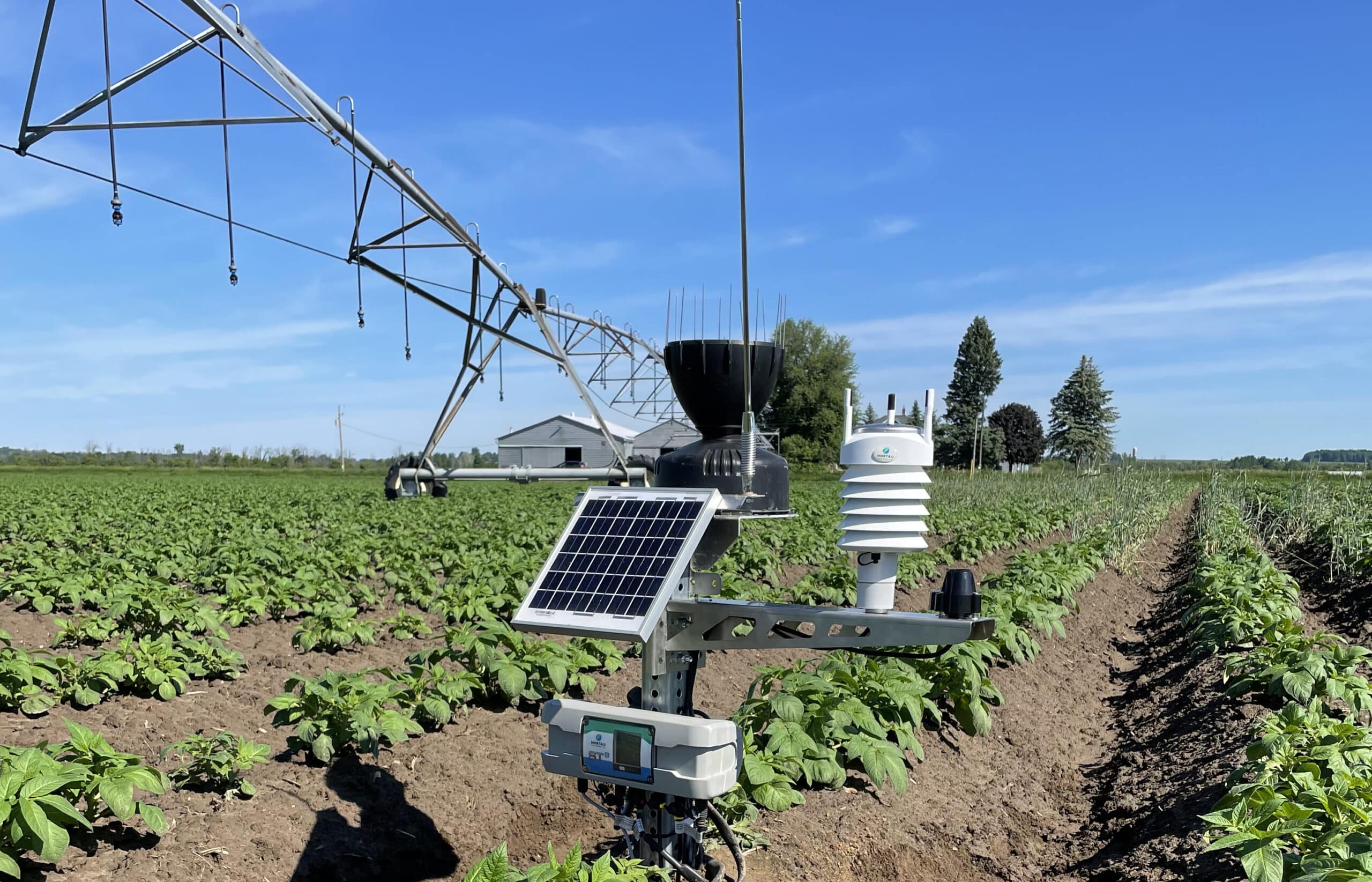How to save your potato crop when hot temperatures happen.
As a consequence of climate change, Ontario has been experiencing summer temperatures that exceed what’s ideal for the potato crop especially from late June through August. Yield is greatly reduced at high temperatures — above 30 C during the day and 25 C at night.
Heat and drought go hand in hand, with irrigation needed during heat waves. Irrigation is expensive, and for many farms, water is a reduced natural resource with some fields only rain fed. To compound the problem, rainfall has been erratic, with some areas receiving only two to four inches of rain per season.
Periods of extended heat reduce yields dramatically — the earlier a heat wave occurs, the more negative its impact. High temperatures during tuber initiation increase the respiration rate, which reduces tuber set. A high respiration rate in mid-to late-season may cause the production of a second set of tubers that never size up — high temperatures slow down tuber bulking resulting in yield losses. In addition, second growth is a common problem caused by heat waves.
What can growers do to cope with heat stress? Here are some tips:
- Supplemental calcium applications — Jiwan Palta, an emeritus researcher at the University of Wisconsin, and an expert on the calcium nutrition of potatoes, has shown calcium helps reduce the effects of heat stress. Heat stress causes the stomates of leaves to close until temperatures drop. High calcium levels reduce the effect of heat stress by maintaining normal cell functions above 28 C. This includes the opening and closing of stomates and cell enlargement. Palta recommends the application of 100 to 150 pounds of soluble calcium per acre through the irrigation water. This total should be split into three or four applications every two or three weeks starting at tuber initiation. For dryland production, one option is to apply calcium at last hilling mixing the product into the soil as much as possible. A less soluble calcium fertilizer such as gypsum should be used in sandy soils to reduce the risk of calcium loss by leaching.
- Plant early — In Southwestern Ontario, using whole seed results in closed rows and vigorous canopies by mid-June. This helps keep the soil cool reducing evapotranspiration and crop stress. Potato roots suffer when the soil warms in direct sun. Many fields in the province still have open canopies in early July, because of late planting.
- Plant late varieties in soils with the highest organic matter (OM) content — Soil organic matter improves soil health and improves water retention capacity.
- Plant potatoes after small grains, corn or other crops that leave significant residues after harvest.
- Avoid fields that have saline, steep, or shallow soils or compacted soils with low soil porosity.
- Avoid over fertilization, especially with nitrogen.
- Monitor soil moisture during the season and schedule irrigation to crop needs.
- Use dammer dikers which improve each plant’s access to moisture and nutrients by trapping and holding water — they prevent runoff and soil erosion.
Potato breeders around the world are trying to develop varieties that are more tolerant to heat and drought stress. There’s no doubt that such varieties will help growers to maintain the production of a high-quality crop as the weather gets hotter and drier and rainfall becomes more erratic.
Header photo — A tensiometer, used by WD Potato Ltd. during the 2022 growing season, has a digital rain gauge, and sends results to growers through a smartphone app or online approximately 15 minutes after making readings. Photo: Patrick Dol, WD Potato Ltd.
Related Articles
Climate Change and Heat Stressed Spuds








